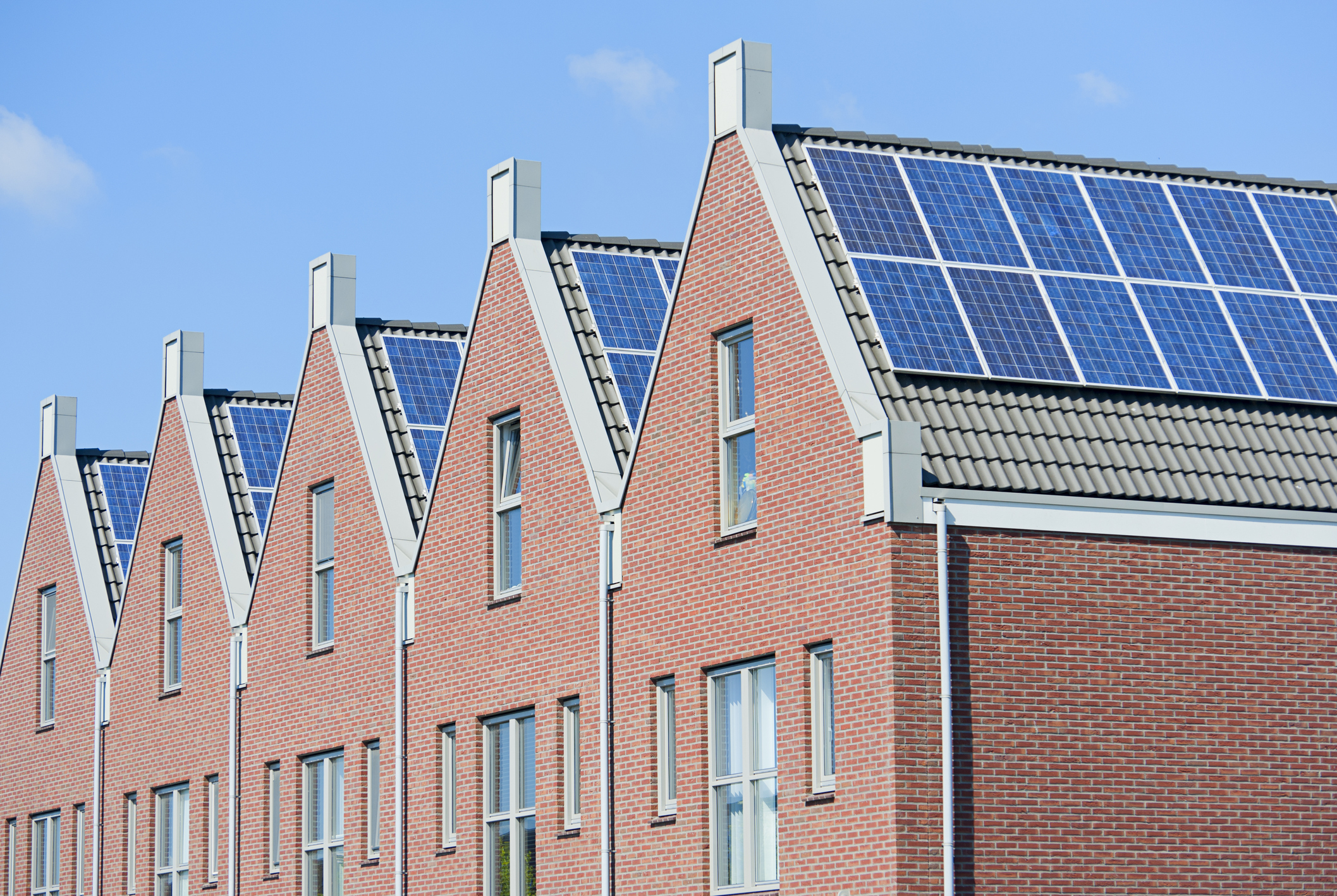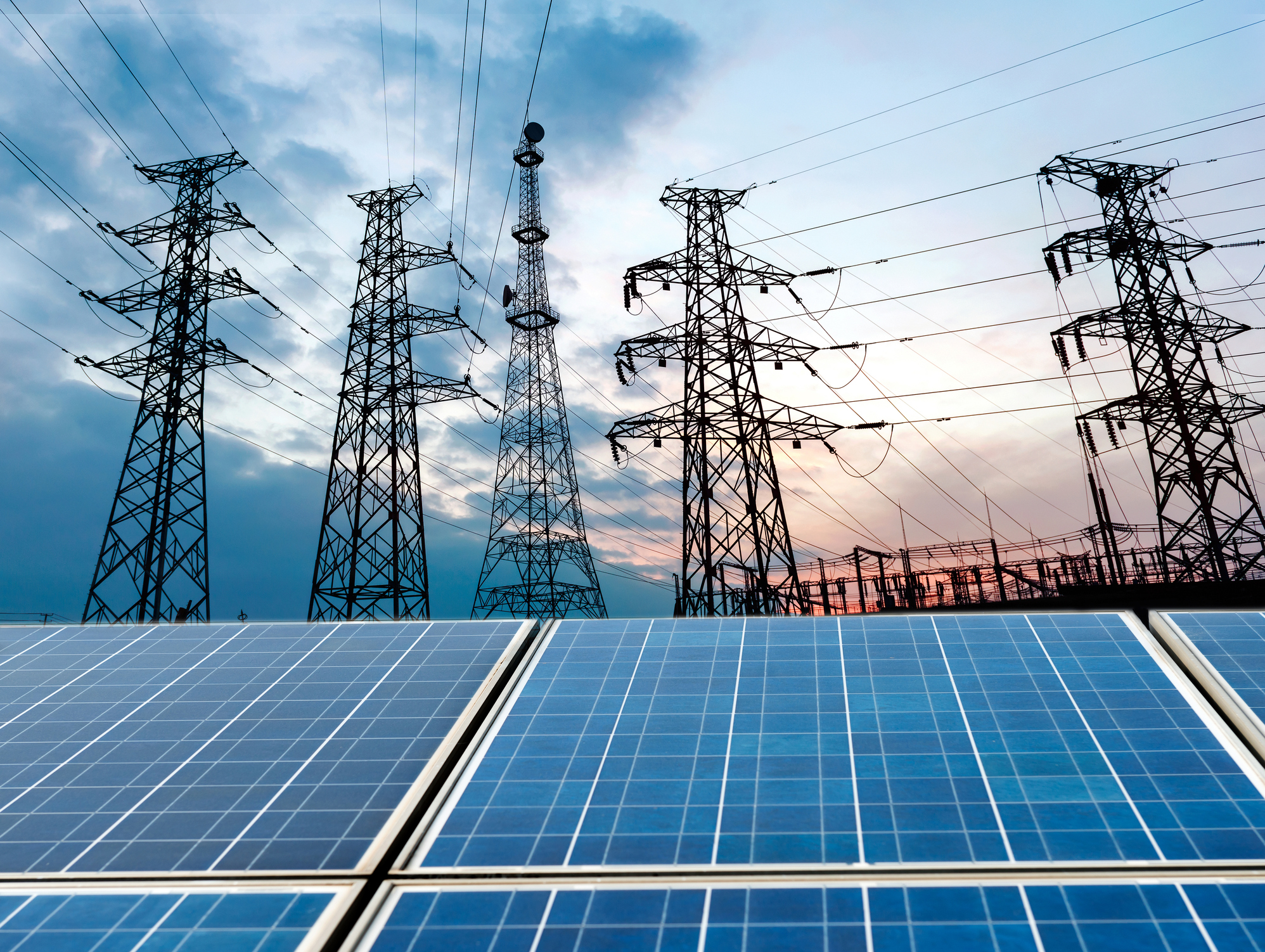Are you doing a solar project?
Modernize can pair you with three to four pros in your area, so you can compare options and save time and money.
What if you could set up your solar energy system and bypass your utilities altogether? With more powerful lithium ion batteries coming out on the market, some homeowners are beginning to see the electric company as an unnecessary middleman. That’s exactly what happened in Brooklyn this year. Residents there set up their own microgrid — a network of independently owned and operated solar panels and batteries — that exists entirely separate from large utility-scale grids.
The Brooklyn Microgrid is actually an energy market: members can buy and sell energy they generate among themselves. Participants use a structure similar to the net metering incentives doled out by mainstream utilities: solar households receive credits for excess kilowatts they put back on the grid. Households that need to purchase extra energy off the grid pay for it in green credits, all of it tracked through a blockchain network and smart meters.
The startup’s experiment shows the potential for distributed solar — without an assist from local utilities. And it’s demonstrating how powerful solar can be in the hands of a small group of homeowners. So how do microgrids work? And what’s the likelihood that you’ll have one in your neighborhood one day? Today, we’ll examine these questions, to suss out whether or not this trend stands to reshape energy, or if, like artisan mayonnaise, it’s just too Brooklyn to really take off.

So What Is a Microgrid Anyway?
Microgrids aren’t actually as uncommon as you’d think. Typically, large buildings and sites use them so that they can maintain power in the event of an emergency. For instance, the Santa Rita Jail in Dublin, California, hosts its own microgrid. The majority of the time, the Santa Rita microgrid is connected to the larger utility grid in the area, which means that the excess energy it generates feeds back to the larger network to power homes and businesses in the area. Likewise, when it doesn’t produce enough energy to power its operations, it pulls energy off the utility grid connected to local power sources. But if for some reason that larger grid goes down, the jail can disconnect from the utility grid and power itself with its own energy.
And that’s how it usually goes. Except that these systems generally aren’t used for peer-to-peer energy trading systems. But that’s exactly what the Brooklyn Microgrid does. Although this system is designed to work with the conventional New York City grid, it’s making a strong case that utilities eventually may not be necessary in order to distribute energy to homes.
Are Microgrids More Efficient than Utility-Scale Grids?
Besides giving consumers (particularly homes that generate their energy through solar power) more control over what happens to their watts, microgrids actually resolve some of the inefficiencies inherent in large, overarching grids.
Find the Right Contractor for Your Solar Project
Whether you’re ready to begin your project now or need some expert advice, our network of contractors are here to help. With a few simple questions, we’ll find the best local professionals for you
Energy experts such as Richard L. Kauffman, who is the New York governor’s chairman of energy and finance, tell us that the ideal energy system is dynamic, allowing electrons to flow in multiple directions into homes, instead of just one way. Power lines also demonstrate energy losses the longer they have to travel. So a small, distributed network does conserve energy and make better use of the electricity it generates.
On the other hand, microgrids aren’t great at storing energy. Lithium ion batteries usually aren’t powerful enough to capture the energy needed to keep homes powered on cloudy or unproductive days. And internal resistance in batteries makes their energy degrade over time. Big companies are currently trying to solve this problem — Tesla took its first dip into the solar battery market last year with the Tesla Powerwall — but there’s just not a perfect solution right now, which is what makes backup energy sources so necessary.

Are Microgrids the Future of Energy?
Probably not. America’s utility grid is so expansive that it’s difficult to imagine abandoning it for a network of smaller, distributed microgrids. Additionally, managing those networks with renewable energy comes with its own problems — homeowners who go off the main grid might experience blackouts and other issues, especially since battery power isn’t as efficient as it could be.
However, it does give solar advocates and providers a bartering chip when it comes to keeping incentives and rebates. Recently, many utilities have been scaling back net metering programs and other offers created to incentivize homeowners to switch to solar. Ideally, utilities and solar companies would work together to provide homeowners with the best setup for their situation — but there are places where these two factions are at odds with one another. In these places, independent networks could potentially give providers leverage to negotiate more favorable rates for solar households.
Additionally, the success of these microgrids may push forth changes in larger utility grids. A lot of experts agree that our grid needs some updating, especially if more homes are going to rely on solar, where production can be kind of unpredictable. So changes like these could spur utilities to update transmission lines, invest in smart grid management systems, and build more of their own utility-scale solar installations. All in all, we’ll just have to wait and see — but whatever way it all shakes out, you can bet that your future will have a lot more solar power in it!
Find the Right Contractor for Your Solar Project
Whether you’re ready to begin your project now or need some expert advice, our network of contractors are here to help. With a few simple questions, we’ll find the best local professionals for you
Reviews from Real Homeowners
Welcome to Homeowner Resources! We are the Modernize blog. Modernize pairs more than 3 million homeowners a year with pre-vetted contractors in their area. This blog started because we believe homeowners should know everything about their homes, from how their HVAC works to which front door colors they might love. On Homeowner Resources, you can find information on every part of your home, right down to how you can negotiate with contractors to get the best price. Here's more about the blog.
Need a contractor? Learn more about how Modernize finds the right pro for you.


